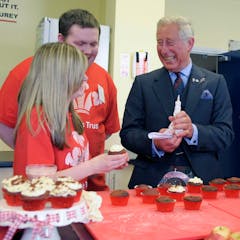
Articles on Charity
Displaying 1 - 20 of 187 articles

During the month-long period of fasting, the obligation of zakat takes on heightened significance.

Ramadan encourages acts of charity. This also poses a question for many Muslims as they consider what more could be done to feed the hungriest in the world, many of whom are in Gaza.

Charity advertising often reinforces historical stereotypes of underdevelopment that equate Africa with poverty.

When it feels like so many people are in need of compassion, how do we decide where to direct it?

Threats from disappointed donors over the language used during campus protests about the Israel-Hamas conflict have become angrier and more public than in the past.

As we approach the season of giving, a child psychology researcher offers suggestions on how parents can teach their kids to be generous and kind.

On the wall of an orphanage in Venice, a musicologist encountered a fresco featuring an aria written for an opera. She’s since embarked on a project to bring this forgotten music back.

Emphasizing self-sufficiency in fundraising pitches can increase charitable donations, a marketing scholar has found.

People are more likely to donate to charity when the brand shows ‘bravery’ by speaking up about social causes.

Non-profits provide critical services and social support for communities. They also provide settings where vital forms of social capital are produced.

Rather than protecting some of the world’s most vulnerable children, many of Africa’s orphanages are exploiting them.

Excessive donation requests can end up triggering donor fatigue or inspiring accusations of ‘social washing’.

Effective altruism, often called ‘EA,’ is closely linked to utilitarian philosophy and calls for donors to carefully scrutinize whether their giving makes an impact.

In the Charitable Corporation Scandal, a group of politically connected directors leveraged the company’s altruistic image to attract investors – before raiding the funds to prop up other ventures.

Child sponsorship is often billed as a significant way of improving children’s lives. However, sponsorship is based on narratives that fail to address the role of rich countries in global poverty.

A study of what customers experience when they’re asked to chip in for a cause during checkout suggests that retailers should be careful about participating in these campaigns.

While ‘patron’ is a position with no formal power, it’s an important role for members of the royal family.

Virtue signaling is designed to communicate specifically to one partisan tribe and to affirm its moral superiority. A scholar of ethics and politics explains why that is unwelcome in a divided US.

Competition is hurting charities and the causes for which they raise funds. There must be a better way.

The 2022 federal budget implements long needed regulations to support the charitable sector.
